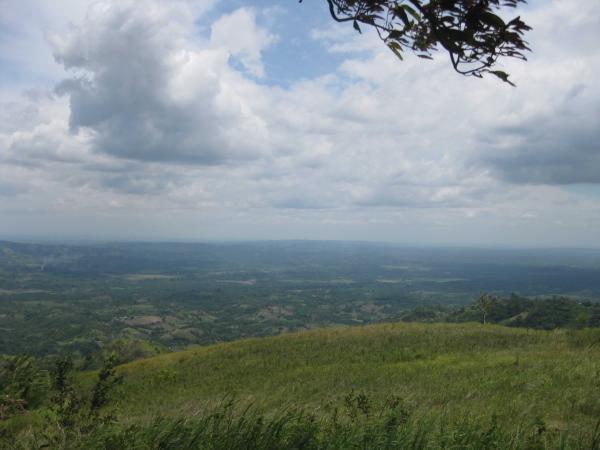
A view of Liguasan Marsh from Mt. Akir akir
Description:
Believed to have "unlimited" oil deposits, Liguasan Marsh is a vast complex of river channels, small freshwater lakes and ponds, extensive marshes, and arable land in the basin of Mindanao River. Although referred to as just Liguasan Marsh, the marsh actually consists of two adjoining marshy basins, Liguasan Marsh and Libungan Marsh, with different water regimes. Liguasan lies at the confluence of the Pulangi, Maganoy, Buluan and Allah rivers while Libungan lies at the confluence of Libungan and Mindanao rivers.
Potential:
Liguasan Marsh has been a subject of development plans since the days of Ferdinand Marcos. He organized a study on the potentials of the marsh that covers four provinces in Mindanao. In the late 1990s, the National Economic Development Authority (NEDA-12) made a comprehensive development plan for the marsh and organized the Liguasan Marsh Development Council. It includes a fish cannery, a fish port, and an eco-tourism site.
The marsh is considered as the best source of mineral water. It is also the biggest source of freshwater fish in Mindanao. The rare species of wildlife offer a huge potential for eco-tourism. A good part of the marsh is a bird sanctuary that serves as a nesting place of the famous Philippine Eagle and other rare birds.
Development:
To prevent and control floods, the government has initiated the construction of a cut-off channel from the Pagulungan sector of the Rio Grande de Mindanao. The major development project, the Liguasan Marsh Freshwater Fisheries Project, has recently been established under the auspices of the Southern Philippine Development Authority. It is a project aiming to optimize the fishery and agricultural resources of the marsh in an extensive food production program. It includes the installation of at least 800 fish cages for tilapia culture and other 400 fish corrals for fish capture. Another major project is the construction of an ice plant and cold storage facility at Piket to store up to ten tons of fish, 200 fish cages at Ponol to serve as a field laboratory for new technology in fish culture, 225 fish corrals distributed amongst 112 families, and a fattening tank to fatten up the mudfish caught in the marsh.
Flora:
The marsh is particularly rich in orchids. The freshwater coming from the marshes supplies the growth of different flora surrounding the areas including Eichhornia crassipes, Livistona rotundifolia, Corypha elata, Nypa fruticans, Areca catechu, Pandanus tectorius, Calamus mallis, Asplenium nidus, Drynaria quercifolia and a wide variety of climbing ferns and orchids. There is a 5,000 ha patch of virgin forest with a very rich flora within the marsh.
Fauna:
The marsh supports a great variety of aquatic wildlife including 20 species of fishes, three species of reptiles, and over 20 species of waterfowl, notably herons, egrets, and ducks. Liguasan is the only locality in the Philippines where the Comb-crested Jacana irediparra gallinacea can be found. The marsh is one of the last strongholds for the endangered Philippine Crocodile (Crocodylus mindorensis), and the Estuarine Crocodile (Crocodylus porous). The endangered Monkey-eating Eagle (Pithecophaga jeffery) is reported to be present in the forested areas in the marsh.
Economic and social use:
The marsh is home to 112,000 Maguindanaon families whose primary means of livelihood are fishing when water levels are high and agriculture when they are low. Because of its very rich wildlife, the marsh has considerable potential for nature tourism.









